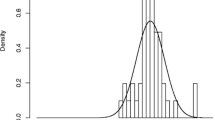Abstract
Seven phenytoin information leaflets were evaluated for their readability using the Singh Readability Assessment Instrument (RAIN). These evaluations were performed to ascertain if the variable criteria of the RAIN, developed to assess the readability of patient information brochures, were appropriate for evaluating the readability of medication information leaflets. Leaflets were scored in terms of eight variables identified by reading researchers as facilitating comprehension: global coherence, local coherence, unity, audience appropriateness, adjunct questions, writing style, illustrations, and typography. A scoring criterion of 80% adherence on most variables was considered acceptable. The American Association of Retired Persons leaflet was found to be acceptable. Five of the leaflets failed to meet RAIN criteria for audience appropriateness, adjunct questions, illustrations, and typography. Results support the RAIN as a useful tool for evaluating and optimizing the readability of medication information leaflets.
Similar content being viewed by others
References
Federal Register, 60, 44182 (1995).
American Pharmaceutical Association. Survey of State Compliance with OBRA 90’s Patient Counseling Law. Washington, DC: American Pharmaceutical Association; 1993.
Schulz RM, Holdford DA. Definitions and meaning of health. In: Smith MC, Wertheimer AI, eds. Social and Behavioral Aspects of Pharmaceutical Care. New York, NY: Pharmaceutical Products Press; 1996:15–16.
United States Pharmacopeial Convention. USP awards information leaflet study to UNC/Duke collaboration. The Standard. 1998; March/April.
Singh J. RAIN (Readability Assessment Instrument Manual). Development of an Alternative Methodology for Determining the Readability of Text. Dissertation. Richmond, VA: Virginia Commonwealth University; 1994.
Baumann JF, Stevenson JA. Identifying types of anaphoric relationships. In: Irwin JW, ed. Understanding and Teaching: Cohesion Comprehension. Newark, DE: International Reading Association; 1986:9–20.
Moe AJ, Irwin JW. Cohesion, coherence, and com prehension. In: Irwin JW, ed. Understanding and Teaching: Cohesion Comprehension. Newark, DE: International Reading Association; 1986:3–8.
Doak CC, Doak LG. Root JH. Teaching Patients with Low Literacy Skills. Philadelphia, PA: J. B. Lippincott Company; 1985.
Readence JE, Bean TW, Baldwin RS. Content Area Reading: An Integrated Approach. Dubuke, IA: Kendall/Hunt; 1985.
Anderson TH, Armbruster BB. Content area textbooks. In: Anderson RC, Osborn J, Tierney RJ, eds. Learning to Read in American Schools: Basal Readers and Content Texts. Hillsdale, NJ: Lawrence Erlbaum Associates; 1984:193–226.
Halliday MAK, Hasan R. Comprehension in English. London: Longman; 1976.
Klare GR. Readability. In: Person PD, ed. Handbook of Reading Research. New York, NY: Longman; 1984:681–744.
Harris TL, Hodges RE. A Dictionary of Reading and Related Terms. Newark, DE: International Reading Association; 1981.
McDonough, Jr. JT, ed. Stedman’s Concise Medical Dictionary. 2nd ed. Baltimore, MD: Williams & Wilkins; 1994.
Sojourner RJ, Wogalter WS. The influence of pictorials on evaluations of prescription medication instructions. Drug InfJ. 1997;31:963–972.
Author information
Authors and Affiliations
Rights and permissions
About this article
Cite this article
Kirkpatrick, M.A.F., Mohler, C.P. Using the Readability Assessment Instrument to Evaluate Patient Medication Leaflets. Ther Innov Regul Sci 33, 557–563 (1999). https://doi.org/10.1177/009286159903300225
Published:
Issue Date:
DOI: https://doi.org/10.1177/009286159903300225




